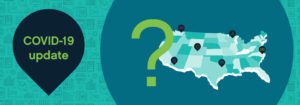The time has come. ICD-10 is here. Your months and years of ICD-10 preparation will now be put to the test. It is time to stop anticipating ICD-10 and start tracking its impact on your revenue.
Across the country, hospital executives fear the effects of ICD-10 on their revenue, and for good reason. The Centers for Medicare and Medicaid Services (CMS) predicts that hospitals and health systems could see payments decline for up to two years after ICD-10 takes effect.
It doesn’t end there. CMS predicts that:
- Denials could increase by 200%
- Accounts receivables could rise to 40%
- Claim error rates could grow 10%
But you don’t need to go it alone. Data analytics can shine a light on your ICD-10 efforts and help you approach it with confidence. Our advanced analytics enable you to measure, monitor, and benchmark the impact of ICD-10 so you can identify outliers, prevent denials, and protect your bottom line.
Follow these top five tips as you track your ICD-10 performance with data analytics:
Tip #1: Trend and benchmark CMI, unspecified code usage, and secondary diagnosis codes.
Let your data show you how your ICD-10 performance compares to your peers. Say 90% of your peers are coding for a particular secondary diagnosis code but you are not. Understand why that is and take steps to rectify the problem.
Tip #2: Reduce denials by identifying their trends and causes.
It’s a fact. Denials will increase after ICD-10 takes effect. But you can take control over them now, before they pose significant risk to your revenue. When you identify the trends and causes of documentation and coding denials, you can spot where your ICD-10 coding efforts may be going wrong and what you can do to help ensure your claims get paid.
Tip #3: Identify required specificity missing from physician documentation.
ICD-10 is all about specificity. Your physician documentation needs to be specific to make sure you are paid for the complexity of care you provide. Unlike some analytics solutions, our proprietary ICD-10 analysis can identify which documentation concepts are missing and causing a lower level of specificity.
Tip #4: Track coding and billing efficiency trends.
CMS predicts that your accounts receivables will rise. Let your data identify where any bottlenecks may exist in coding and billing. Discover and resolve these bottlenecks to reduce their impact on your revenue.
Tip #5: Mitigate compliance risk related to ICD-10.
Your compliance department must remain diligent after ICD-10 takes effect. ICD-10 will magnify the potential for documentation and coding compliance issues. Let our compliance risk rules engine scan your claims on a daily basis so you can identify potential ICD-10 audit targets and areas of risk.
For more information about how MedeAnalytics can help you measure, monitor, and benchmark the impact of ICD-10 on your revenue, visit www.medeanalytics.com/revenue-integrity or contact us at info@medeanalytics.com.
Be sure to visit us at AHIMA, booth #1443, September 26-30. To schedule a private demonstration, email Katie.Broussard@medeanalytics.com.
Get our take on industry trends
Avoid COVID-19 modeling pitfalls by eliminating bias, using good data
COVID-19 models are being used every day to predict the course and short- and long-term impacts of the pandemic. And we’ll be using these COVID-19 models for months to come.
Read on...Population Health Amid the Coronavirus Outbreak
In speaking with many colleagues throughout the provider and payer healthcare community, I’ve found an overwhelming sense of helplessness to the outbreak’s onslaught. This is exacerbated by the constant evolution of reported underlying medical conditions that indicate a higher risk of hospitalization or mortality for a coronavirus patient.
Read on...COVID-19 and the Financial Storm Ahead for Providers
Across the country, healthcare organizations are seeing 40%-80% declines in monthly charges with some of the most profitable services lines only seeing 20% of their normal monthly volumes during the pandemic.
Read on...3 Steps Any Healthcare Organization Can Take to Improve Enterprise Analytics
By Kristin Weir When it comes down to the most basic purpose of why organizations use analytics, it’s simple: they…
Read on...


